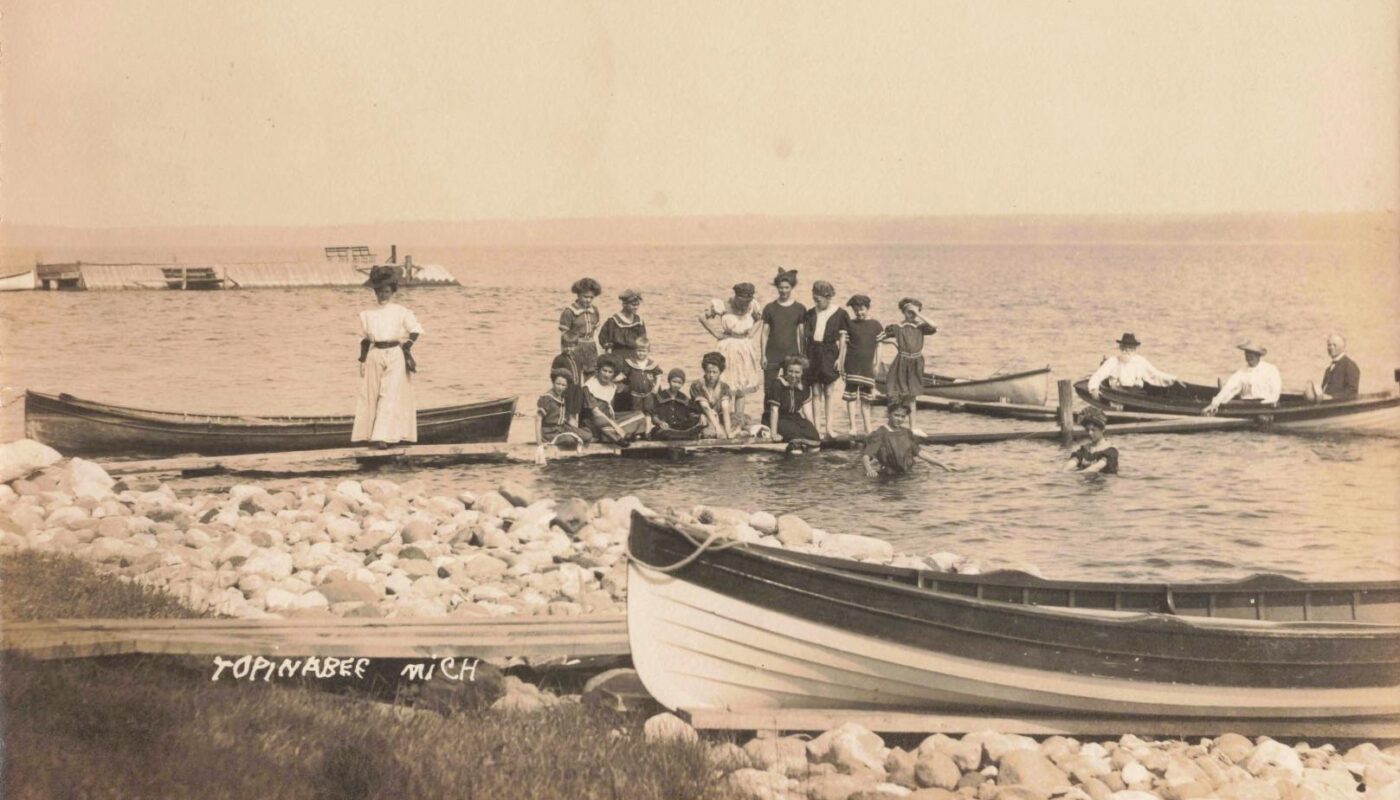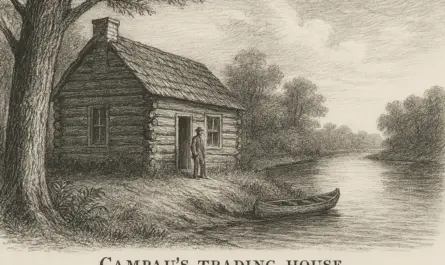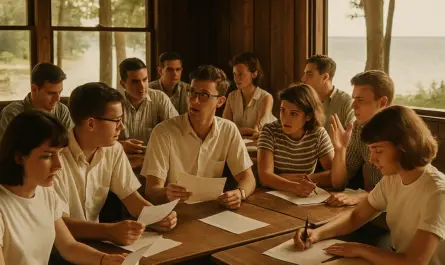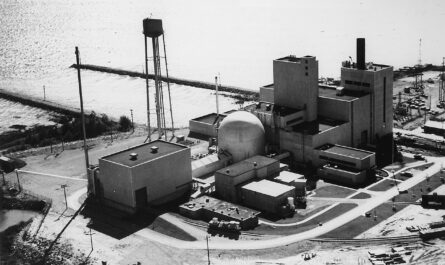Topinabee began with a decision on where to lay a railroad. In 1881, the Michigan Central pushed north along the west side of Mullett Lake. Hotelier H. H. Pike platted a resort and gave it a name with deep roots: Topinabee, for a Potawatomi leader who signed the Treaty of Greenville in 1795. A depot followed in 1882, and with it a plan for a full summer village. This is the early history of Topinabee, which is told through tracks, docks, and porches.
Video – Steamers, Rails, and Summer Nights: Topinabee, Michigan’s Inland Waterway Era
A Resort Built on Timing and a Little Luck
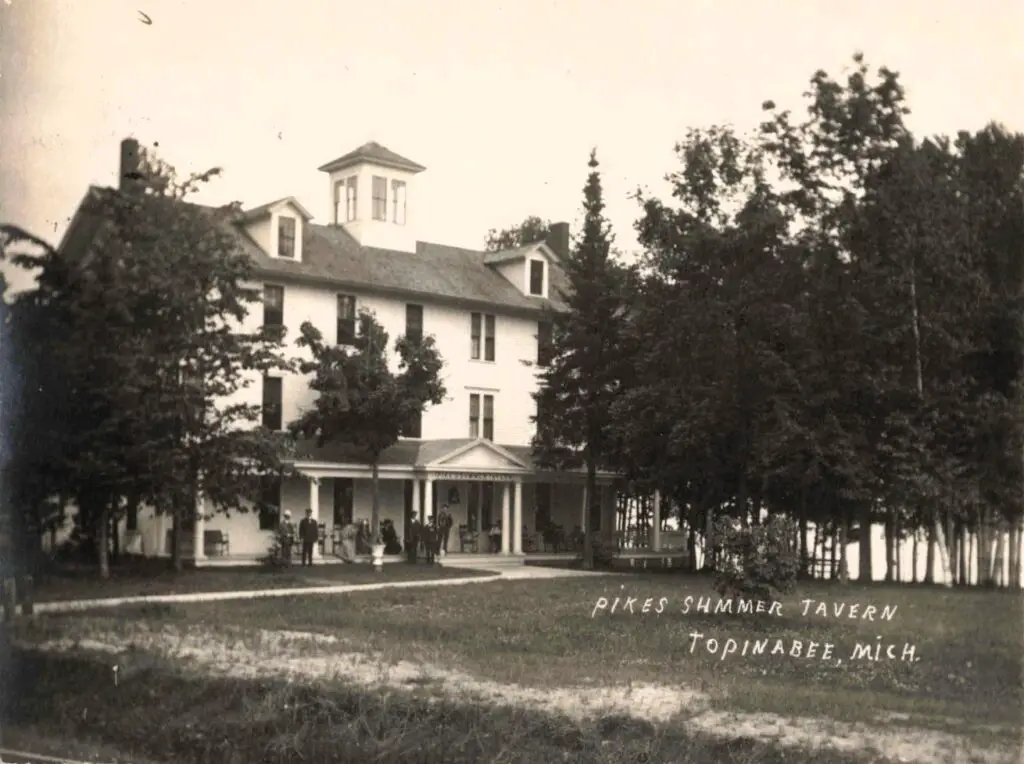
Pike’s wager was simple. Trains would deliver guests; the lake would keep them. He built Pike’s Hotel, a Tavern, and a Dancing Pavilion to serve the traffic from the new line. Advertisements tied the resort to “Sanitas Springs” water. By 1895, the community counted 34 residents, a post office, a store, and steady seasonal trade. The early history of Topinabee, Michigan, is a lesson in how transportation and tourism move together.
The Waterway Makes a Circuit
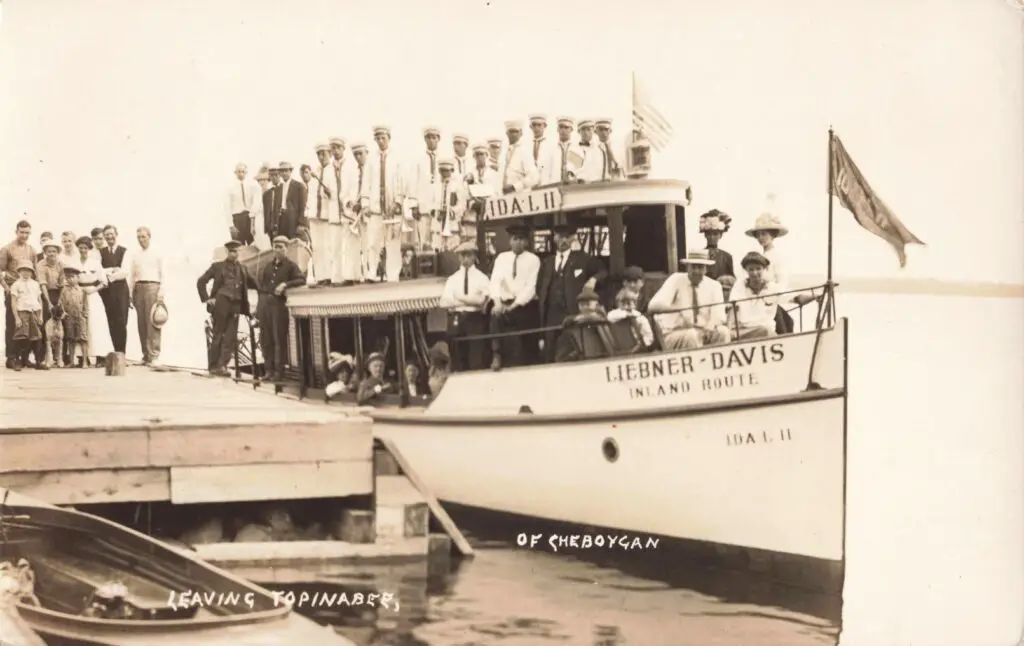
Topinabee’s fortunes rose with the Inland Waterway, a 40-plus-mile chain of rivers and lakes connecting Crooked and Pickerel Lakes to Burt and Mullett and out to Cheboygan. Boats with names now etched in memory—Topinabee, Ida L, Ida L II—made regular calls at the dock. Passengers stepped ashore for supper, a stroll, and sometimes a dance before sailing on. In photos from the era, you can see the calm lake, the neat rows of docks, and the light clothing of a summer crowd. The history of Topinabee, Michigan, cannot be told without these hulls and whistles.
Fire and the Hotel Topinabee
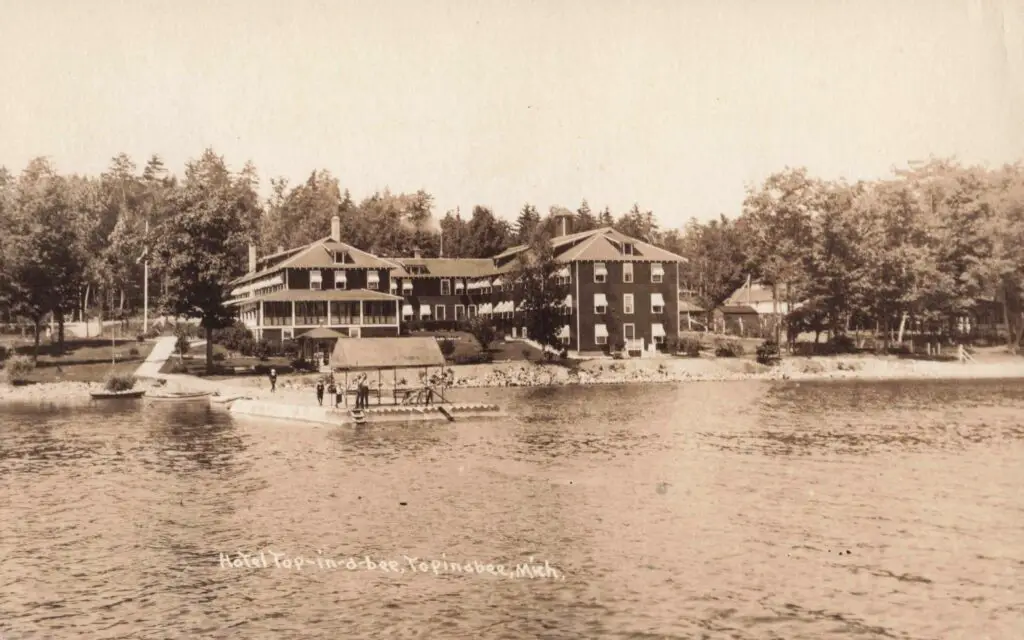
After Pike died in 1900, Edward Bailey took control of the hotel. Disaster struck in 1917 when the building burned. A year later, a new structure opened as Hotel Topinabee, a shingled, porch-wrapped building that suited its setting. Reports point to another fire in 1928 and another rebuild. The cycle of loss and renewal marked the hotel’s place in town life, and it set up later chapters when operations changed hands during the 1930s.
Leisure on the Shore
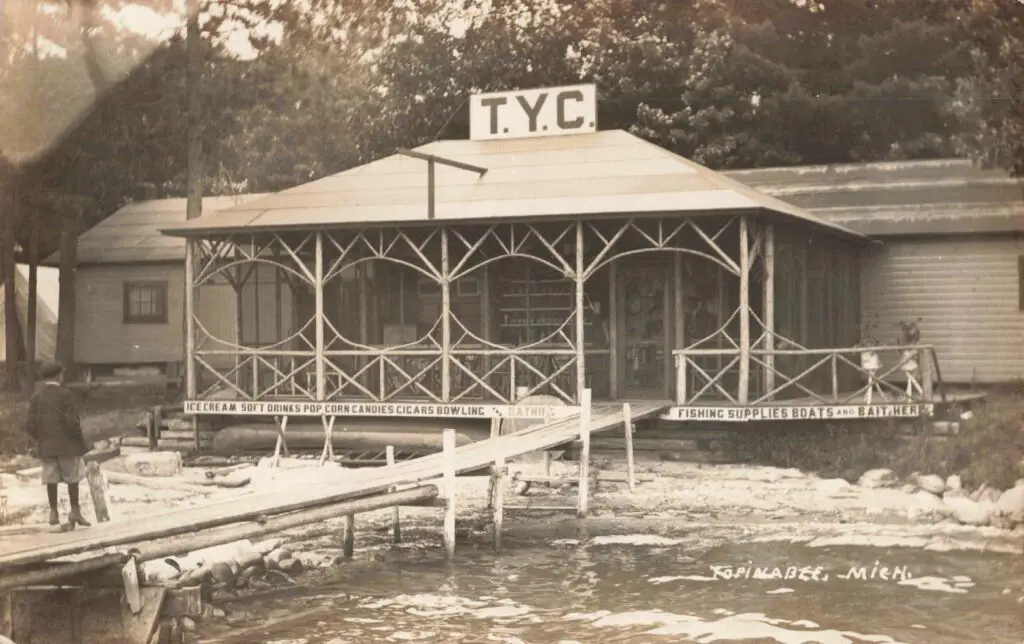
The photos you supplied match the written accounts. A lakeside club porch, labeled T.Y.C., offered ice cream, soft drinks, popcorn, candies, cigars, bowling, and bathing. A tennis court stood near a small casino hall used for dances and community events. This rhythm—boats, beach, and evening socials—explains why Topinabee stayed in postcards and family albums. The history of Topinabee, Michigan, is also the history of simple vacation habits that lasted for decades.
Faces of a Season
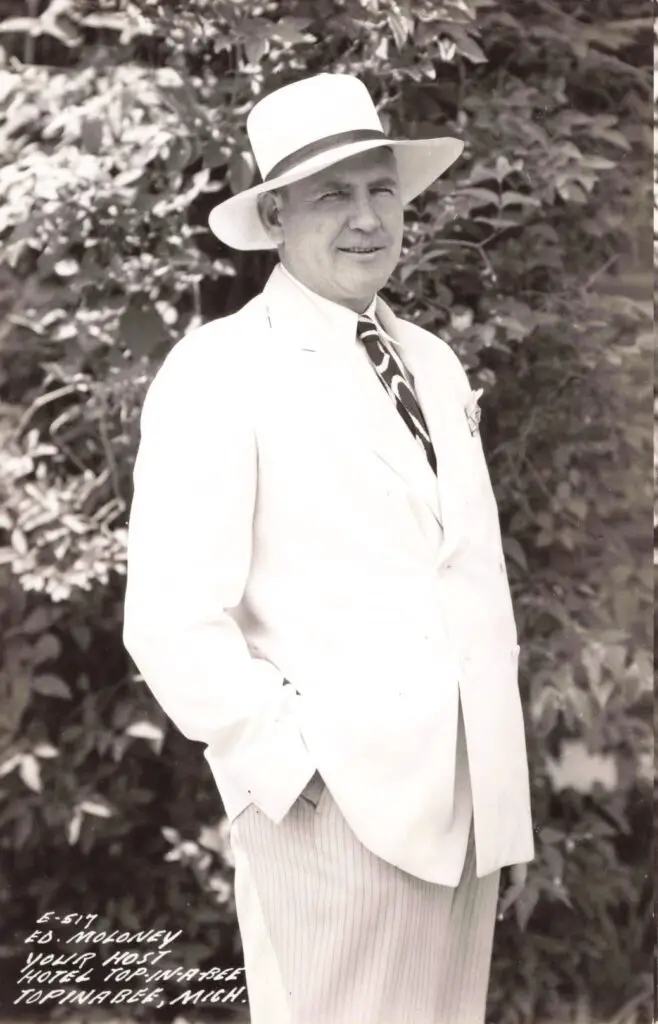
Archival postcards identify Ed Moloney as “Your Host” at Hotel Top-in-a-bee. He appears in a white suit, hat tilted, the very image of hospitality between the wars. Photographs of boat crews, hotel verandas, and cottage life round out the human side of the story: workers who met the trains, sailors who handled the lines, and guests who came to sit by the water until the whistle called them back.
The Last Train to Topinabee and What Remains
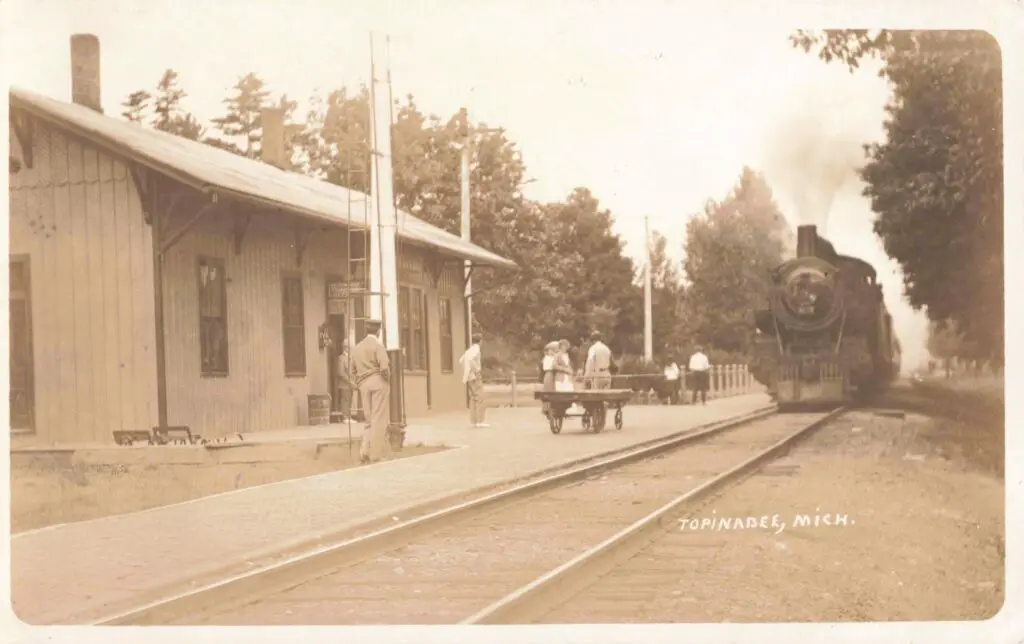
Passenger runs ended in 1958. The tracks went quiet, but the depot did not. Mullett Township purchased the building and turned it into the Topinabee Public Library with a small local collection. Today cyclists and walkers on the North Central State Trail roll past the library and Topinabee Beach Park, where families still swim and picnic. A visitor can stand at the water’s edge, read the depot sign, and see how the pieces still fit: rail, dock, and lake.
Why This Story Matters
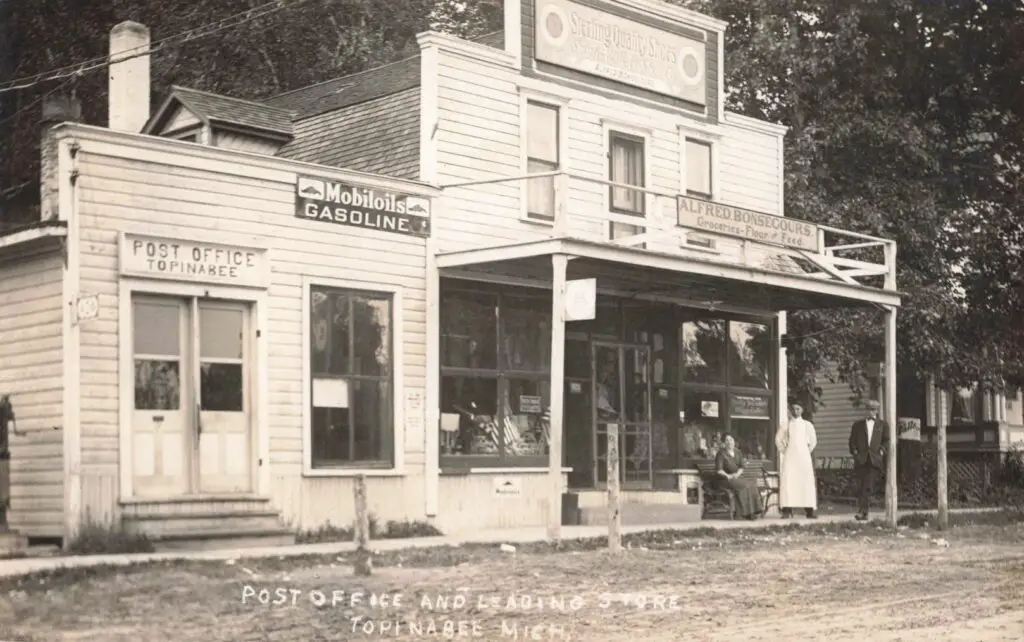
The history of Topinabee shows how a Northern Michigan community formed around transportation and leisure. A chosen route in 1881 shaped where people slept, ate, and spent their days. The dock became a stage. The hotel changed names and owners but kept the porch light on. When the trains stopped, the village found a new path in trails and public space. That arc is modest and clear, and it still draws people to the shore.
Works Cited
- “Cheboygan: Inland Waterway Boats and Lines.” Inland Water Route Historical Society.
- “Historic Community of Topinabee.” Michigan Water Trails.
- “Historic Glimpses into the Importance of the Inland Waterway and Straits of Mackinac.” Michigan Water Trails (PDF).
- “North Central State Trail.” TrailLink.
- “North Central State Trail: Indian River to Mackinaw City.” Michigan Trail Maps.
- “Topinabee Depot, Michigan Central Railroad/New York Central Railroad.” Detroit1701. .
- “Topinabee Public Library.” Mullett Township. .
- “Topinabee: A Little Jewel on Mullett.” Cheboygan Daily Tribune. .
- “Topinabee (Chief Topinabee).” Wikipedia. .
- “Topinabee, Michigan.” Wikipedia. .
- “Ed Moloney Your Host, Hotel Top-in-a-bee, Topinabee, Mich.” University of Michigan—Tinder Collection Record. .
- “The Inland Waterway and Straits Area Water Trail Plan.” Michigan Water Trails (PDF). .
